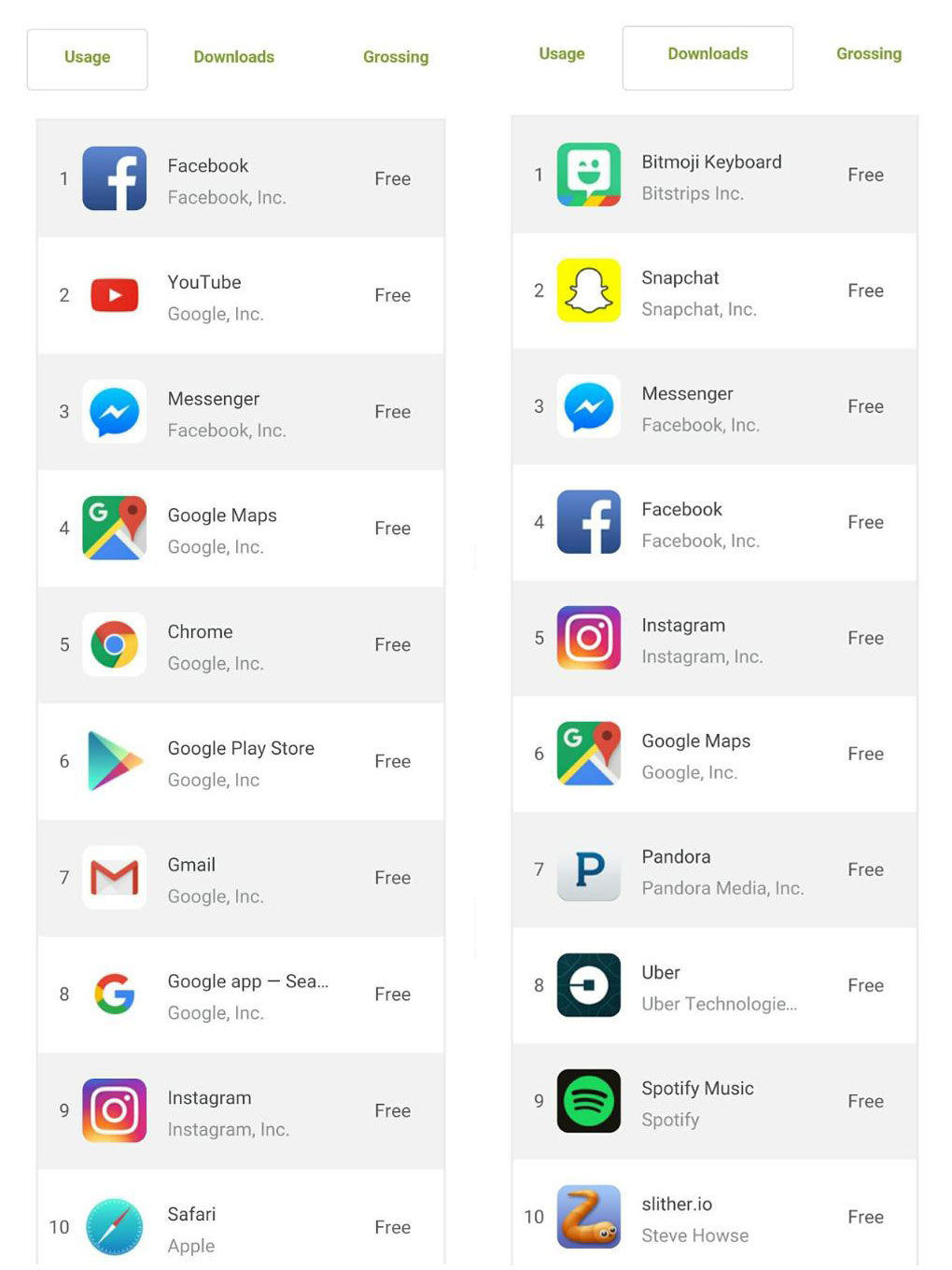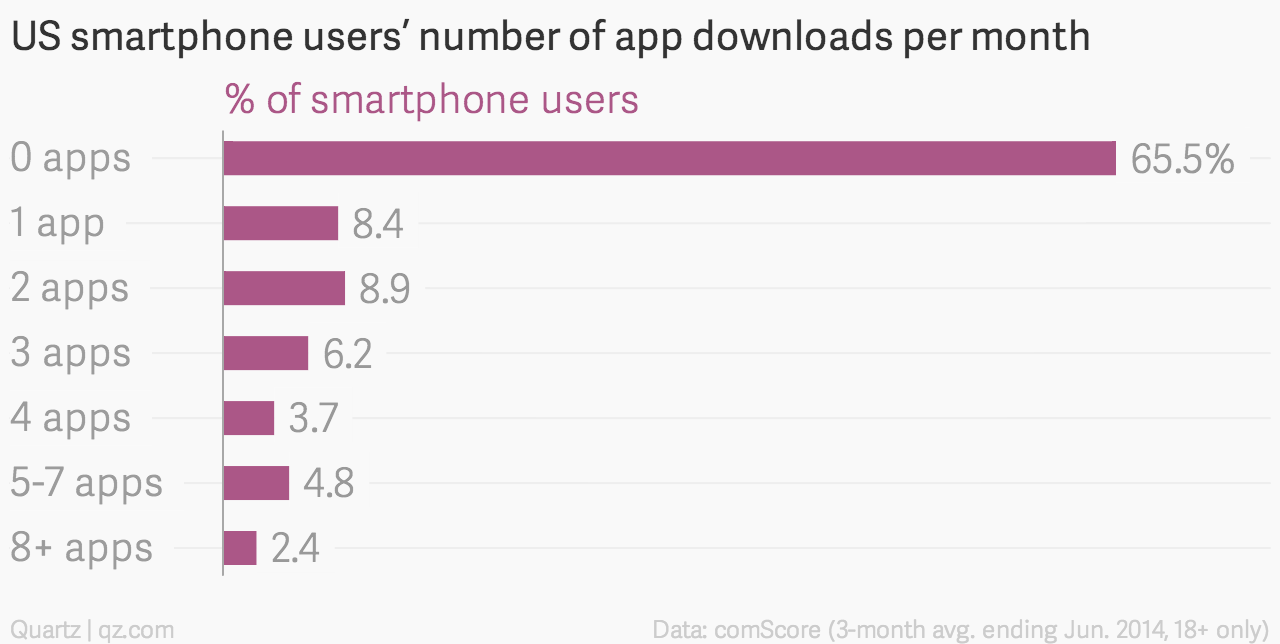Here’s a fun exercise: Dig deep into your memory and ask yourself how many apps you downloaded last month. If your answer’s more than zero, you’re in the minority.
Three things in life are certain:
- Death
- Taxes
- Every new web design client asking you to build them an app
Apps are all the rage these days, and that’s rarely more obvious than when we talk to our clients about their digital needs.
But the fact is: apps are kind of like kale.
Everybody will tell you kale’s amazing for you. They’ll extol its benefits in exhaustive and convincing detail. But when you rush to Whole Foods, buy a few bushels, and cook them up — all you get is a bitter mouthful of plant matter vaguely reminiscent of burying your face in garden mulch.
And that’s when you realize: kale may be amazing, but it just isn’t for you.
Apps are the same way. You’ve heard they’re the holy grail of digital marketing, but you don’t really know for sure. (Though it’s clear from your app developer’s rates that they think it’s the holy grail.)
And something in your gut tells you that apps, like most supposed holy grails, may be more of a snipe.
Many business owners don’t have that instinct. They want to ride the wave — even though they don’t fully understand it. They see apps as a golden ticket for staying ahead in a marketplace inhabited by tech-obsessed, millennial, digital natives.
What they don’t know is that most of those digital natives download zero apps per month. More on that later.
So what is an app, anyway?
I asked Google “what is an app?” and here’s what I got back:
“A self-contained program or piece of software designed to fulfill a particular purpose; an application, especially as downloaded by a user to a mobile device.”
The operative word phrase here is to fulfill a particular purpose.
An app lives or dies by its purpose. You could say the same of a website, but in general, a website exists to fulfill a different purpose.
An app needs to achieve a purpose that a website cannot achieve. And there are really only two scenarios when an app can do that.
The 2 reasons you might need an app
There are two major criteria that justify investing in an app. You need to meet at least one for the app to have any level of relevance or desirability, and they both hinge on purpose.
1. The company building the app has considerable brand recognition
Take Pepsi, for example. They have an app called Pepsi Pass that lets people “access exclusive rewards” when they buy Pepsi products.
We should notice two things about this app:
- The app serves a purpose: that of rewarding customers for buying the company’s product (i.e., expressing brand loyalty). It works because people care enough about Pepsi enough to want such rewards.
- The app is also not a mobile version of the website. The first cardinal sin of app development is creating an app that mostly just duplicates the company website in app form. What’s the point?
Remember how we said that apps and websites serve different purposes? This is a case in point: If people want to learn about Pepsi, they’ll find Pepsi’s website in their mobile browser, not download an app.
It’s all about stages in a process — someone who’s just discovering a brand doesn’t want their app. They want to learn about the brand first, then, maybe, they’ll decide they care enough to get the app.

2. The company’s product/service is the app
Snapchat’s key function (sending and receiving disappearing photos and videos) only works on their app. An app is the ideal platform for Snapchat because the app is quite literally their entire business. It makes sense as a mobile app because it takes advantage of core features of a phone: a camera with video capabilities, plus quick and easy access.
This is perhaps the best example of how app-centered companies can be successful. The app not only has a purpose, it is the purpose of the business.
Have you ever been to Snapchat's website? Me neither. It serves its own purpose: to get people to download the app.




















Get started for free
Create custom, scalable websites — without writing code. Start building in Webflow.
Why an app is almost always the wrong decision
Too often, people interpret the earth-shattering success of Snapchat and Uber as proof that, “Apps are in. We should get one.”
Okay, sure — but only if your idea fits one or (ideally) both of the criteria above.
Most smartphone users only use 6-10 apps per week. Statistically speaking, yours is probably not one of them. Here's what they are using (and downloading):

Take a look at the apps people actually use regularly. The key themes are:
- Big brands
- Original, must-have functionality
These aren’t just mobile versions of websites.
If your client thinks their app has the opportunity to break into the top 6-10 apps for the average user, then maybe it has a ton of potential. If not, invest in responsive web design instead.
Nobody downloads apps
Okay, so maybe nobody is an exaggeration, but not by much. In fact, most smartphone users download 0 apps per month.

How is that possible? Well, as the top app charts above show, people are pretty taken care of when it comes to apps they need. For a new app to crack the top charts and see daily use, they’ll need to invent/discover new needs that aren’t already met (like Snapchat did).
According to Quartz, “only about one third of smartphone users download any apps in an average month.”
And even if people do go so far as to download your app, it’s very unlikely that they’ll keep using it.
The average retention rate for an iOS app 30 days after download is 3.2%. That means that only 3.2% of the people who downloaded your app will still even have it on their phone just 30 days later. I don’t like those odds.
The average high-quality mobile app costs about as much to build as a Lamborghini Gallardo. I’ll leave it up to your clients to decide if they’d like spend that much to build a beautiful sports car no one will ever drive.
In case you need more convincing...
Here’s a handy tool for calculating the average cost of a website based on specific needs.
Here’s the same tool for calculating the cost of an app development project.
Next time your client asks you for a mobile app that doesn’t meet the requirements of brand recognition and must-have functionality, run them through those calculators. Then remind them of that 3.2% retention rate.
The top 1% of monetized apps generate 94% of the App Store’s revenue.
I won’t belabor this point, but it only reinforces what we have already outlined: Apps need to have a strong purpose and a key functionality to be worthwhile and widely embraced.
Why responsive web design is the right solution
TL;DR: It’s really what your client was asking for the whole time.
You’ve probably heard a client say this before:
“I need an app so my clients can find my website and buy my products from their cell phones.”
You and I both know that what the client is looking for here is a responsive website. He just doesn’t know it. (And as a freelance web designer or agency, part of your job is to help your clients learn about their options, and the right solutions to their problems.)
People search for businesses on their mobile browsers, not the App Store
The other day, I decided I needed a haircut. But I wanted to switch things up and look for a new barber shop, because the one I normally go to is overpriced.
So I opened up the App Store on my iPhone, typed in “Barber shops Minneapolis” and got a great list of shops near me. I ended up having a great experience and will definitely go back.
Just kidding. That would never happen.
Here’s what you get when you search for “Barber shops Minneapolis” on the App Store:

Let’s just type in “Barber shops,” since the first search didn’t go so well:

Crazy Shave does sound pretty crazy and all, but I haven’t made a ton of progress in finding a new place to get a haircut.
This may be obvious to a digital marketer, but it may not be so to the general public. The App Store is simply not a search engine for service providers. People looking for new apps go to the App Store. People looking for a new barber will consult Google.
Webflow and SEO vs. apps
Limiting a company’s mobile exposure to an app can have disastrous effects on the company’s visibility online.
Sure, as of Mobilegeddon, Google actually does index some app content, but wouldn’t a high-quality, responsive website that provides the same level of user experience on all devices and gets all of its content indexed be better?
Sorry. Rhetorical question.
Skipping a responsive website in favor of an app sacrifices crucial tools that help ensure a company gets found online.
Webflow rocks SEO, making goals easier to achieve
Just check out SEO and Webflow: the essential guide, to learn how to optimize your Webflow sites for search.
Use Webflow CMS as a landing page engine
Building a responsive website with Webflow gives you access to Webflow CMS, the best SEO tool we’ve ever implemented for our clients. Having a CMS that allows clients to quickly and easily create landing pages to boost their SEO and drive traffic to their website is a functionality you just cannot get with an app.
You don’t need an app to be a professional, tech-savvy, and desirable business
Apps are great, and they will continue to drive revenue for the companies whose core functionality revolves around them. For the rest of us, they’re irrelevant to the success of our business.
Consumers have clearly shown that they’re just not very adventurous when it comes to downloading things on their phone. And they’re even less adventurous when it comes to using or keeping what they downloaded.
A good app serves a specific purpose, offers key functionality, and is usually attached to a recognizable brand.
Responsive web design is the only way to provide your clients with a high-quality user experience across all devices and is much more effective than apps when it comes to getting found.
So stop pretending you like kale already. You’re not fooling anyone.































